If you’ve moved into or live in an old property with a brick fireplace and want to enhance it, even paint it, it can be daunting to begin cleaning it up.
Years of soot and smoke stains can be tough to remove, but we have solutions to tackle this challenging task. Read on to find out how
Ways to Clean a Brick Fireplace
Cleaning a brick fireplace involves various methods and numerous products, each claiming to be the best. Having tested many over the years, we can attest to how effective each can be.
Primarily, there are two approaches: using typical household cleaners and, for tougher stains, opting for stronger, industrial-grade cleaning agents.
While some cleaners require simple application and time to work, others, especially general cleaners, may need a bit of scrubbing with a quality stiff brush.
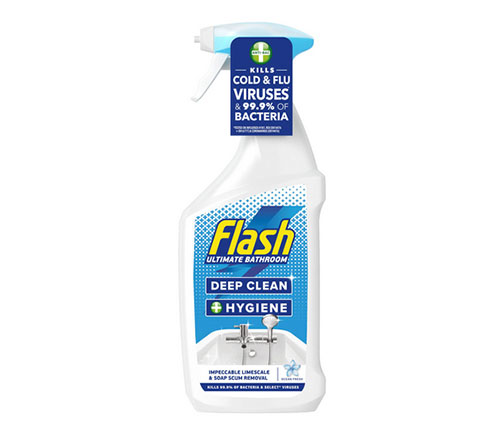
Household bathroom cleaner that can be used to clean a brick fireplace
When to Clean Your Brick Fireplace
The frequency of cleaning your brick fireplace depends on its usage. Burning fossil fuels releases a powdery carbon substance called soot, which settles on pretty much all nearby surfaces.
Brick, block, and stone surfaces are porous, allowing soot to embed itself, causing stains and discolouration over time. To prevent permanent damage, it’s crucial to clean your fireplace regularly when in use, ideally once a week or as soon as you notice any marks or staining.
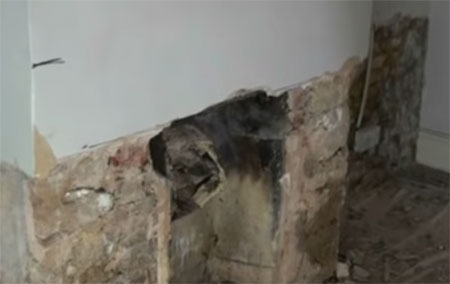
Black marks on fireplace caused by soot
Preparing Your Fireplace for Cleaning
Before deep cleaning your brick fireplace, follow these steps: ensure the fire is out and cooled, remove any ash and debris, and prepare the surrounding area.
If the fireplace is regularly used, cool it down, remove ash, and clear the grate and surrounding objects. Clear all movable items from around the fireplace and area to be cleaned to avoid damage and ensure a clear working space.
Next, vacuum dust and debris from the fireplace, hearth, and surround. Use a stiff brush to loosen larger debris before vacuuming.
Finally, lay dust sheets or similar to protect floors and carpets. Use masking tape to secure sheets to wall surfaces if needed to prevent splashes from water or cleaning substances.
How to Clean a Brick Fireplace
Below, we offer various cleaning methods for brick fireplaces, ranging from gentle to harsh. It’s crucial to start with the mildest method and proceed cautiously to avoid damaging the brick or stone. Always test on a small, inconspicuous area first to ensure safety.
Never mix cleaning chemicals, as certain combinations can produce toxic fumes. Additionally, what works for one fireplace may not work for another due to different factors. Regardless of the method chosen, cleaning will require patience and effort.
Always work from top to bottom to prevent dirty water from running over cleaned areas. Wear old clothes, gloves, goggles and any other suitable PPE for protection as required.
Cleaning a Fireplace with Washing up Liquid
Using washing up liquid is one of the gentlest methods for cleaning fireplaces, suitable even for older bricks in poor condition.
- Start by mixing 150ml of washing up liquid with a litre of warm water.
- Apply the mixture to a scrubbing brush and gently work it into the surface using circular motions.
- Once scrubbed, wipe off with clean water.
- If this method doesn’t suffice, create a paste with washing up liquid and an abrasive material like salt. Apply the paste to the brick, let it dry for at least ten minutes, then scrub it off with a stiff brush.
For both techniques, wear rubber gloves and safety goggles. Work on small areas at a time for best results.
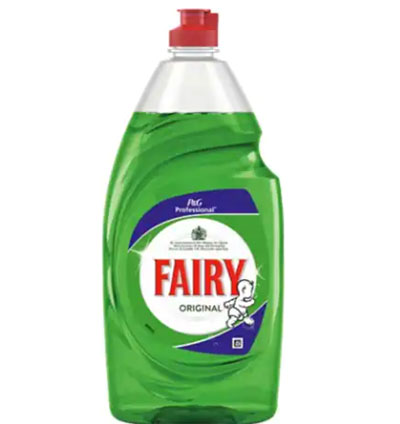
Good quality washing up liquid
Cleaning a Fireplace with Baking Soda
This method is akin to using a paste.
- Mix approximately half a cup of baking soda (about 150ml) with 3 tablespoons (60ml) of washing up liquid until it forms a paste.
- Apply the paste to a small scrubbing brush and work it into the wall using circular motions. Let it sit for 5-10 minutes.
- Finally, wipe it off with clean water.
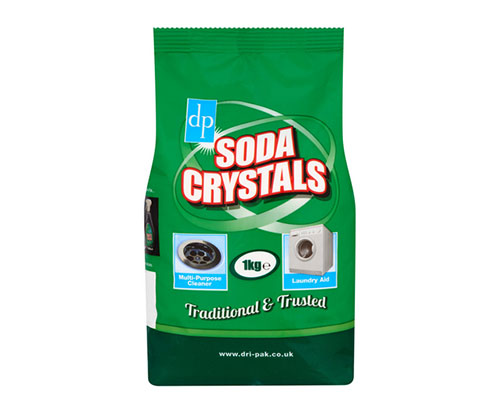
Bicarbonate of soda, baking soda or soda crystals can be used to clean soot from a fireplace
Using Vinegar to Clean a Fireplace
Caution should be exercised with this method, as vinegar’s acidity may harm old or delicate bricks!
- Mix 250ml of white or distilled vinegar with an equal amount of warm water. Pour the mixture into a spray bottle.
- Next, apply it to a small area of the surface to test and repeat after a few minutes. If ok, commence cleaning by starting on another area
- Scrub the surface with a sturdy brush in a circular motion.
- Finally, rinse with clean warm water.
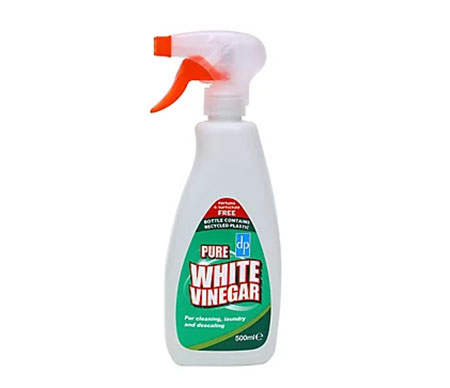
Distilled or white vinegar
Using Bathroom or Oven Cleaner to Clean a Fireplace
While we haven’t personally tested this method, it’s endorsed by many online users.
- Spray a small area with high-quality bathroom or oven cleaner, allowing it to sit for a few minutes.
- Scrub the area with a stiff brush in a circular motion.
- To clean, rinse with clean warm water.
As some cleaners may be caustic, perform a test on a small, inconspicuous area first.
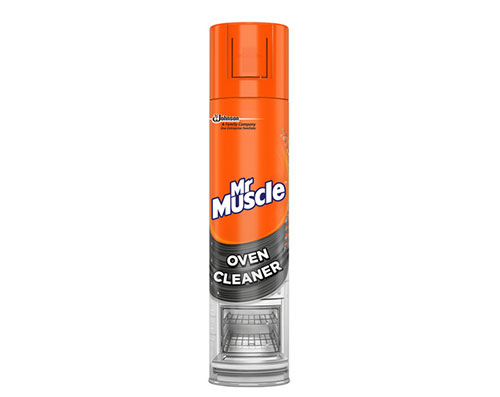
Oven cleaner can be used to clean soot from a brick fireplace
Using Ammonia to Clean a Fireplace
Household ammonia can clean brickwork similarly to the washing up liquid and abrasive mixture mentioned earlier, but it’s harsher, especially on old bricks, so use with caution!
Wear rubber gloves and safety goggles throughout!
- Mix equal parts washing up liquid, ammonia, pumice, and hot water to form a paste.
- Rub this paste into the brickwork with a circular motion using an old cloth, focusing on small areas at a time.
- Let the paste dry completely, typically for about an hour, then scrub it off with a good-quality stiff brush.
- Rinse with clean, warm water and allow to dry.
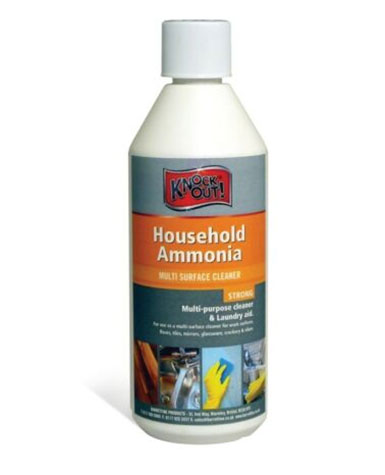
Household ammonia used to clean brick fireplaces
Using Naptha and Ammonia to Clean a Fireplace
Fels Naptha Laundry Soap, available online, enhances the cleaning power for soot removal. However, it requires melting the soap, adding complexity to the process. If you don’t need the full amount, you can halve the measurements.
You’ll need rubber gloves, safety goggles, Fels Naptha Laundry Soap, household ammonia, pumice powder, household detergent, a cloth, a scrubbing brush, a large old pan, and water.
- Shave the Naptha soap into a pan and add six pints of water. Boil and simmer until the soap melts.
- After cooling, add one cup of ammonia and a pound of pumice powder, creating a paste.
- Wearing gloves, rub the paste into the brickwork with a cloth.
- Let it dry for an hour, then scrub with a brush.
- Rinse with warm water, apply detergent, and rinse again.
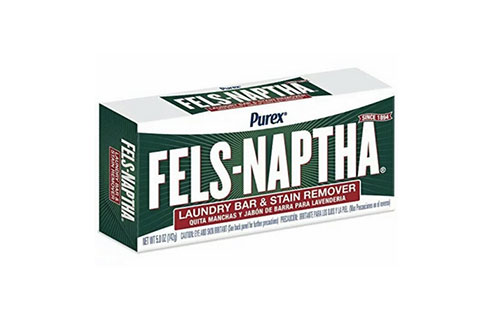
Fels Naptha laundry soap
Cleaning a Fireplace with Trisodium Phosphate (TSP)
TSP, a potent cleaner, degreaser, and stain remover, is available in most hardware stores. However, it’s highly caustic, so protective gear like gloves and eye protection is essential during use.
Throughout this method, wear rubber gloves, safety goggles, and old clothes. You’ll need TSP, a stiff-bristled brush, and fresh warm water.
- Mix eight tablespoons of TSP into a gallon of warm water until fully dissolved. Protect your skin and eyes.
- Scrub the solution into the brick with the brush, applying elbow grease to remove soot stains. Work in small areas.
- After scrubbing, rinse the wall thoroughly with warm water. Repeat if stains persist.
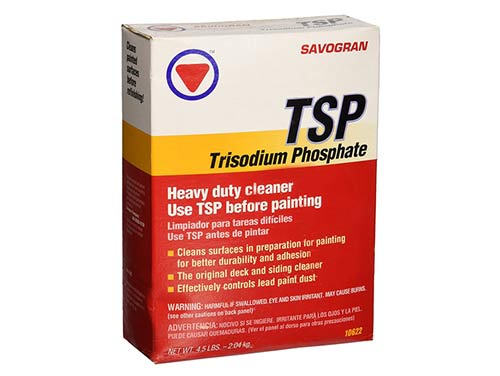
TSP or Trisodium Phosphate
Cleaning a brick fireplace, whether for restoration or painting, is straightforward but labor-intensive. Always wear gloves, goggles, and old clothes when handling chemicals and stay safe at all times!

